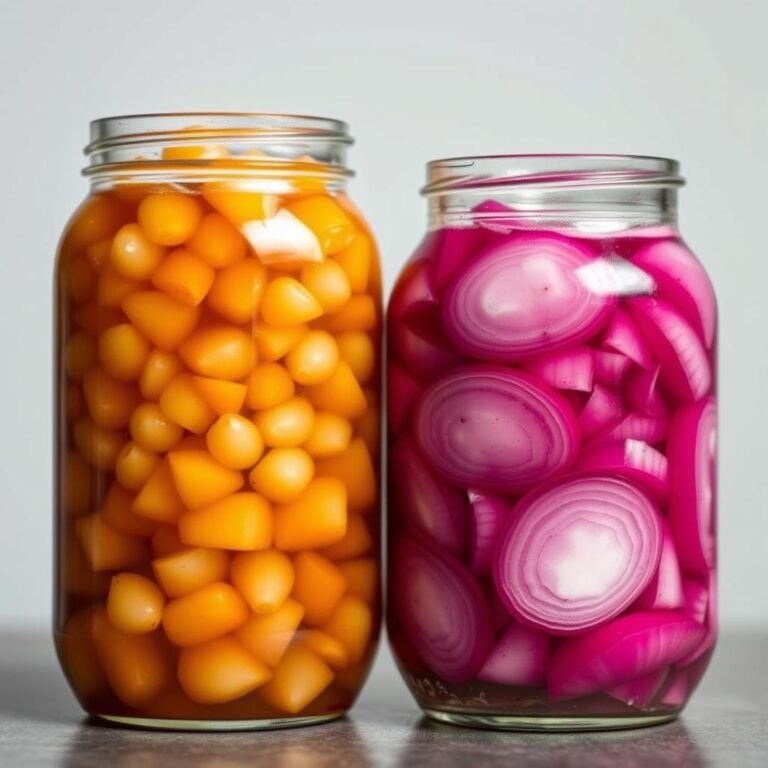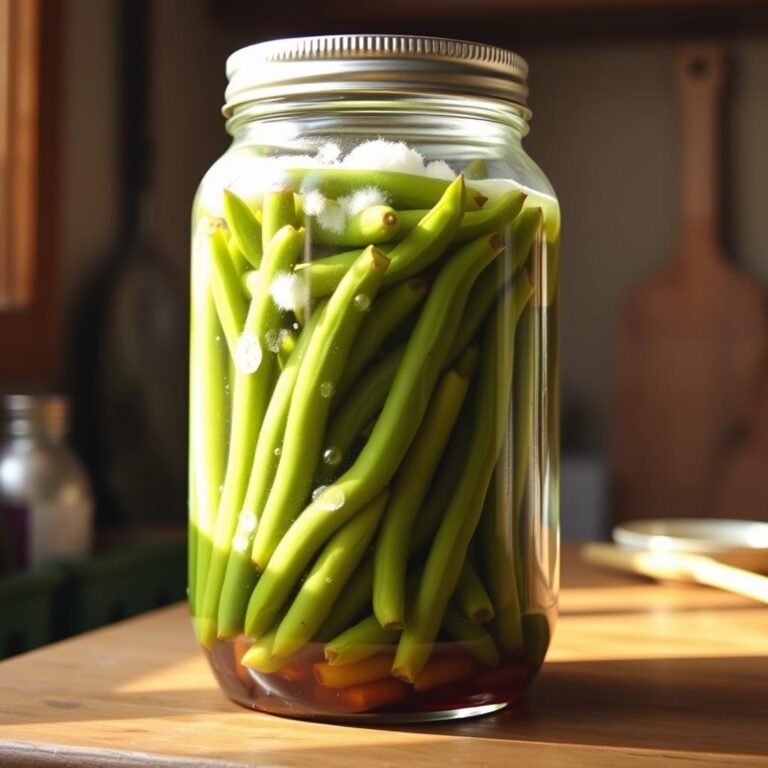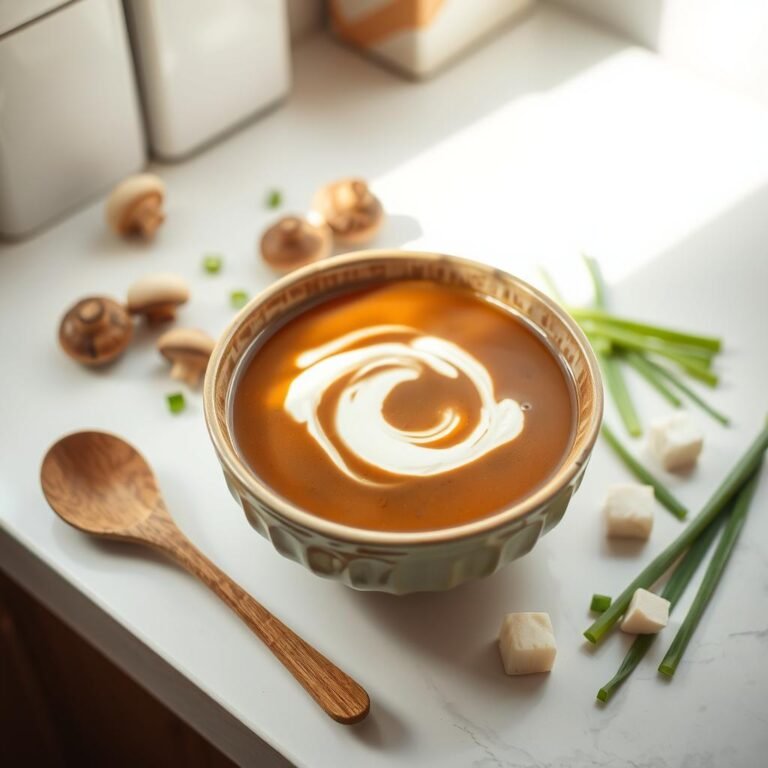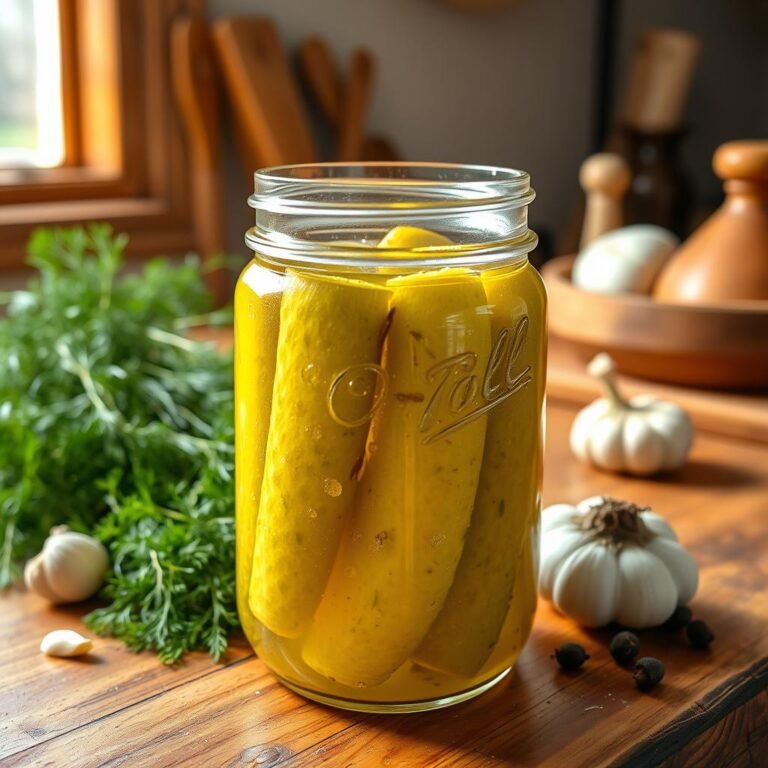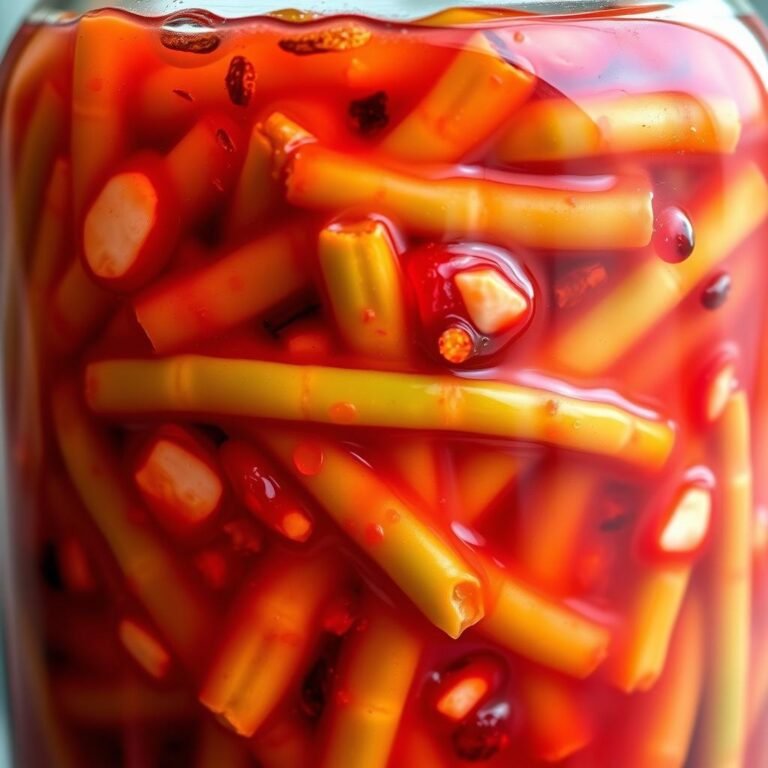How To Make Sauerkraut at Home

Learn how easy it is to make sauerkraut at home. It’s a fermentation classic that adds a sour flavor and probiotics to any meal. This simple recipe will show you how to make it with just cabbage and salt.
If you’ve ever wondered, how do you make sauerkraut at home, you’re not alone. Many people are curious about this old fermentation method.
This guide will teach you to turn fresh cabbage into crunchy, tangy sauerkraut. You’ll learn how to pick the best cabbage and the importance of salt in fermentation. Soon, you’ll be a pro at this cooking tradition.
The Basics of Sauerkraut
Making homemade sauerkraut can boost your cooking skills and health. It’s a key ingredient in many dishes, loved for its taste and health perks. Let’s explore what sauerkraut is and why it’s good for you.
What Is Sauerkraut?
Sauerkraut is fermented cabbage. It’s made by soaking cabbage in saltwater brine. This lets good bacteria grow, making it tangy.
This easy method is why many people make sauerkraut at home. They want to add probiotics to their diet naturally.
Health Benefits of Sauerkraut
Eating homemade sauerkraut is great for your health. It’s full of fiber, vitamins, and minerals. These help your digestion and immune system.
By making sauerkraut at home, you get more nutrients. It also adds good bacteria to your gut. This can make digestion better and lower disease risks.
| Nutrient | Health Benefit |
|---|---|
| Dietary Fiber | Improves Digestion |
| Vitamin C | Boosts Immunity |
| Vitamin K | Strengthens Bones |
| Potassium | Regulates Blood Pressure |
| Calcium | Supports Heart Health |
Essential Ingredients for Homemade Sauerkraut
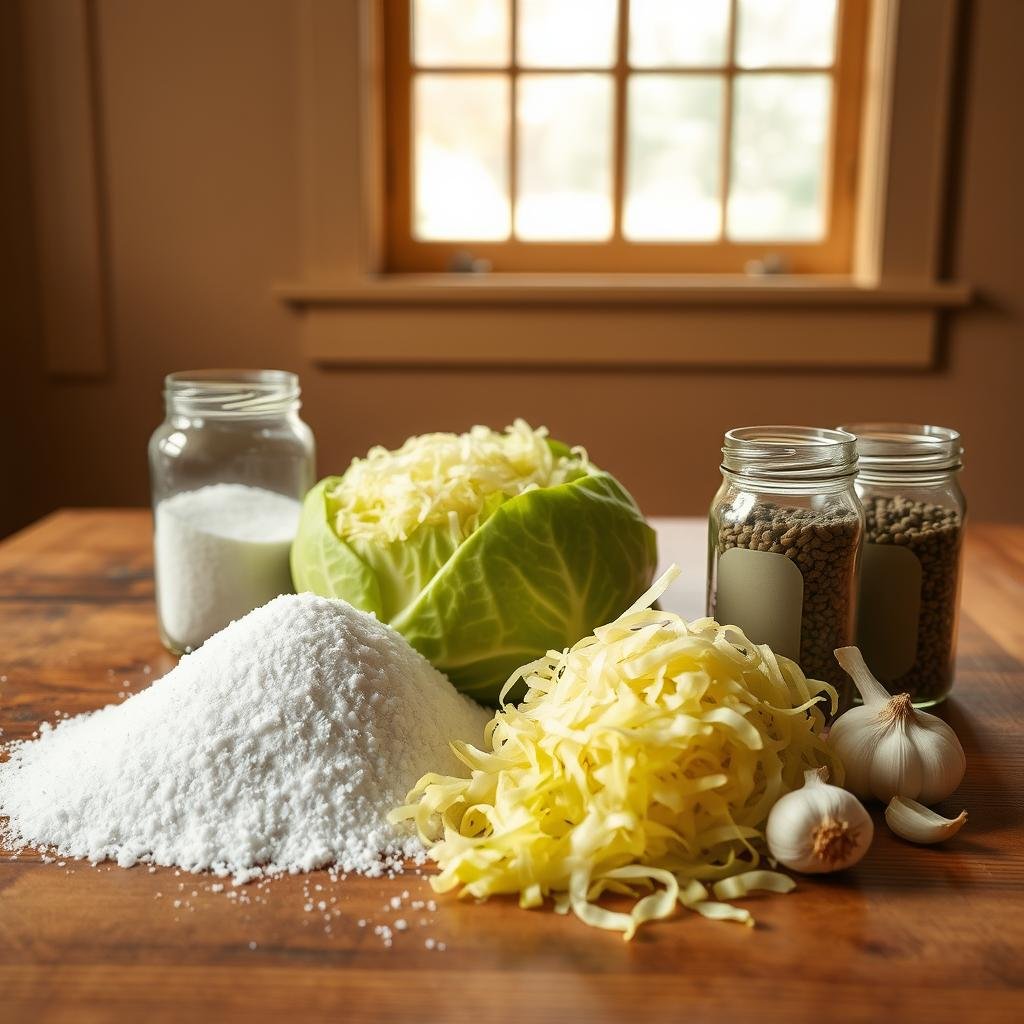
Making great sauerkraut starts with picking the right ingredients. Each part is key to a tasty and crunchy sauerkraut.
Cabbage: Choosing the Right Type
High-quality, organic cabbage is the base of sauerkraut. Green cabbage is traditional, with a sweet and crunchy taste. Red cabbage adds a nice look and a bit different flavor. Choose fresh, firm heads without blemishes.
Salt: Understanding Fermentation Salt
Salt is vital for sauerkraut, helping it ferment without bad bacteria. Use kosher salt or sea salt for the best color and texture. The right salt helps good bacteria grow, making sauerkraut tangy and tasty.
Optional Ingredients for Flavor Enhancement
While cabbage and salt are basic, you can add more for flavor. Caraway seeds and juniper berries give a unique taste. For spice, try garlic or red pepper flakes. These extras let you make your sauerkraut special.
Equipment Needed for Making Sauerkraut
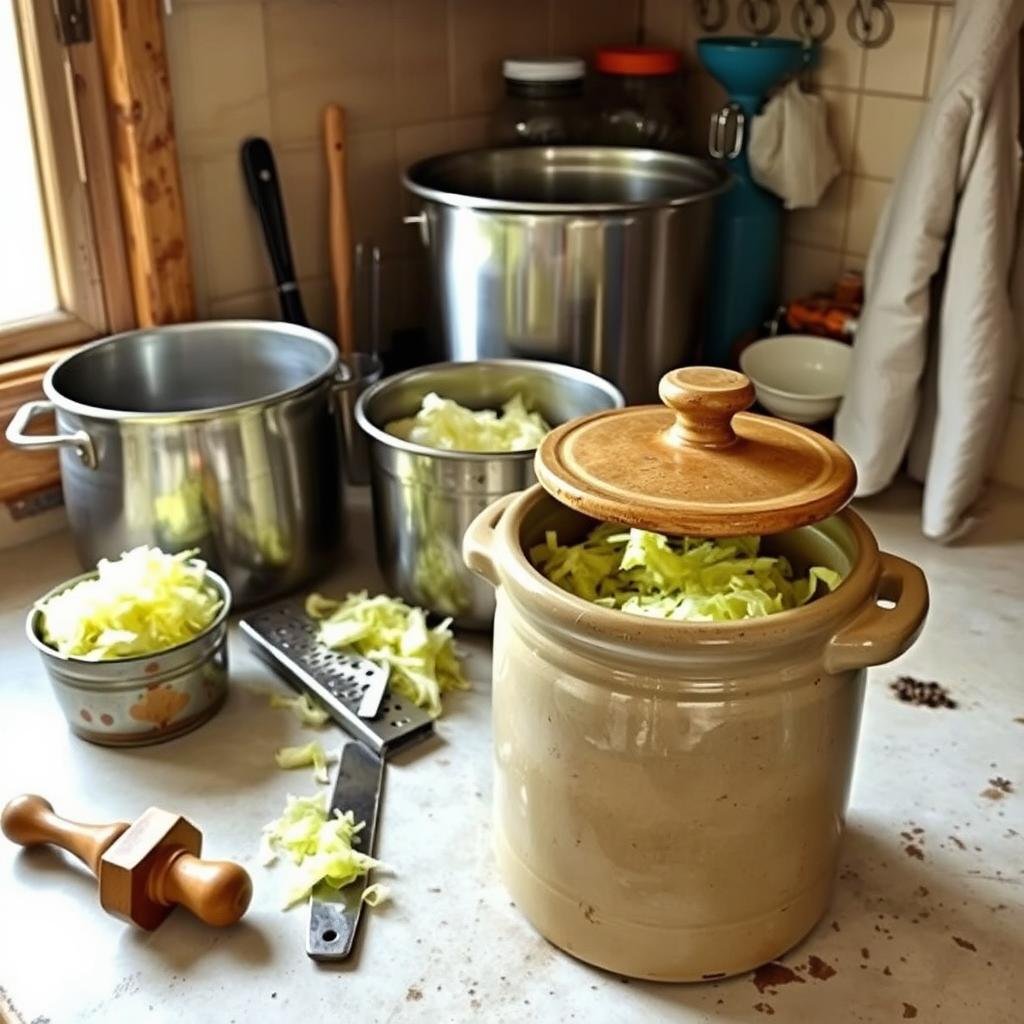
Having the right equipment for making sauerkraut makes a big difference. You need the right vessels, weights, and covers. Each tool plays a key role in making great sauerkraut.
Fermentation Vessels
Fermentation vessels come in many types. You can choose from mason jars to ceramic crocks. Wide-mouth canning jars are popular for their ease and size. For bigger batches, ceramic crocks offer a traditional feel and enough space.
Tools for Preparing Cabbage
Preparing cabbage is a critical step. A Benriner Mandoline is best for thin, even slices. This helps the sauerkraut ferment evenly. A sharp knife works too, but it takes more effort. You’ll also need a digital scale to measure ingredients accurately.
Weights and Covers for Fermentation
Weights keep the cabbage under brine, which is needed for fermentation. The Pickle Helix Fermentation Kit & Lid by Trellis + Co. is a great choice. Use plastic storage caps with a rubber or silicone gasket to keep out contaminants.
| Item | Description | Example Brand |
|---|---|---|
| Digital Scale | Measures salt and cabbage | MyWeigh KD-8000 |
| Mason Jars | Fermentation vessels | Ball Wide-Mouth Quart Jars |
| Mandoline | Uniform cabbage slices | Benriner Mandoline |
| Fermentation Kit | Weights & lids for jars | Pickle Helix by Trellis + Co. |
| Storage Caps | Seals jars during fermentation | One-piece Plastic Caps |
Investing in these tools makes fermenting sauerkraut at home easier and more effective.
Step-by-Step Guide to Making Sauerkraut
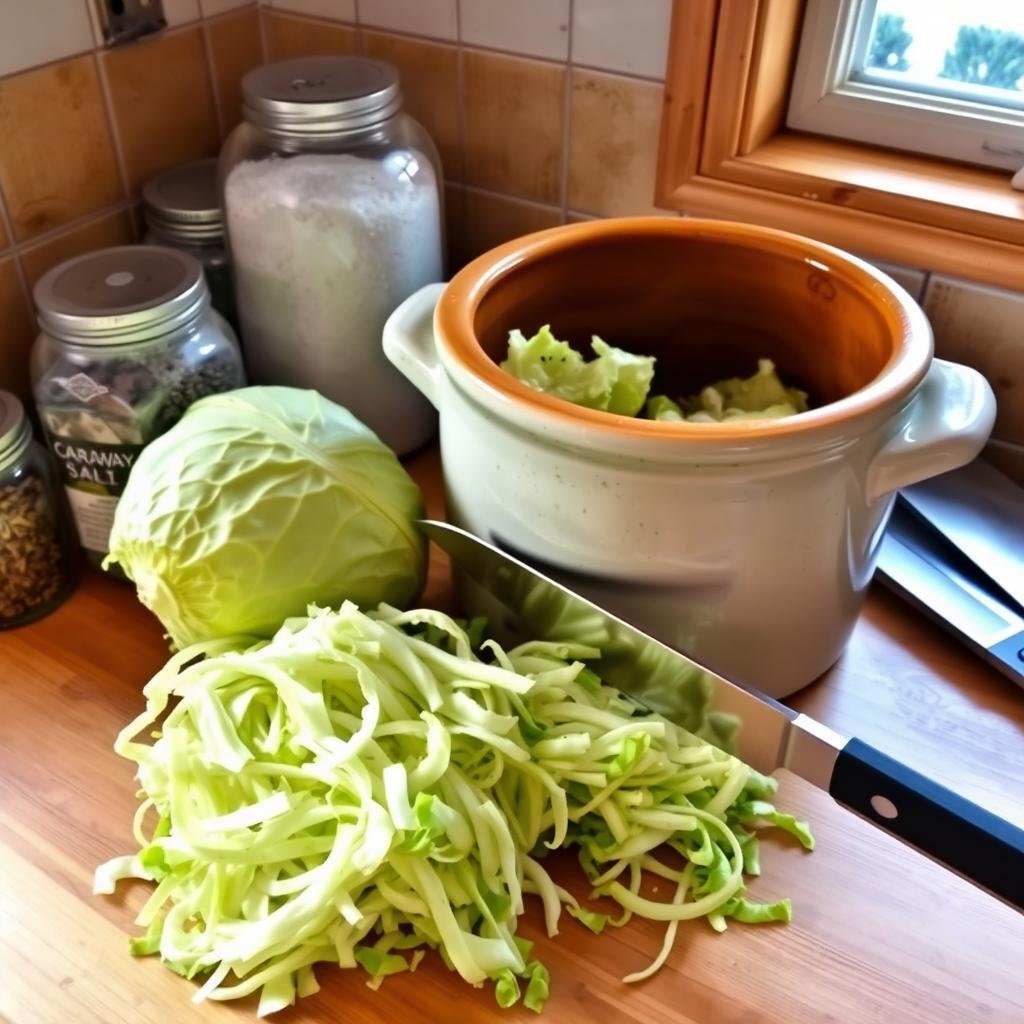
Making sauerkraut at home is fun and rewarding. You get to choose the flavor and ingredients. Here’s a detailed guide on how to make sauerkraut, from prepping the cabbage to packing it in your jar.
Preparing the Cabbage
Start by picking fresh, firm cabbages. Remove any bad or wilted leaves. Cut off the stem end and wash the cabbage well.
Then, cut the cabbage into quarters and take out the core. Shredding it into thin strips helps it ferment evenly.
Mixing Cabbage with Salt
After prepping the cabbage, it’s time to add salt. Use 3 tablespoons of kosher salt for every 5 pounds of cabbage. This salt helps pull water from the cabbage, making a brine for fermentation.
Put the shredded cabbage in a big bowl. Sprinkle the salt over it and massage it in. Keep kneading until the cabbage releases its juices.
Packing the Jar or Fermentation Vessel
Now, put the salted cabbage into your fermentation vessel. It’s important to pack it tightly. This helps get rid of air bubbles and keeps the cabbage under the brine.
Use a fermentation weight or a small jar filled with water to press the cabbage down. This creates an anaerobic environment, which is key for successful fermentation.
Fermentation Process
Sauerkraut fermentation is an art that needs careful management. This guide will help your fermenting sauerkraut turn out perfect.
Ideal Temperature and Environment
To get the best results, keep the fermentation area cool and dark. The temperature should be between 65 and 70°F. This is perfect for the lactobacillus bacteria, which are key for fermenting sauerkraut.
Duration of Fermentation
The time it takes to ferment sauerkraut varies. It usually takes one to four weeks. It’s important to check the sauerkraut by tasting and smelling it during this time.
As it ferments, the flavors will get stronger. Checking it often is key to get the taste and texture just right.
Signs Your Sauerkraut Is Ready
To know if your sauerkraut is ready, look and taste it. It should smell tangy and have a crisp texture. The brine should be a bit cloudy, showing it’s fermenting well.
If it tastes tangy and crunchy to you, it’s ready. Then, move it to cold storage to stop the fermentation.
Storing Your Sauerkraut
Keeping sauerkraut fresh and safe is key. Whether it’s store-bought or homemade, there are ways to keep it good. These methods help your sauerkraut stay tasty and full of probiotics.
Short-term Storage Tips
Always keep store-bought sauerkraut in the fridge. Brands like Cleveland Kitchen Kraut have a “Best By” date. This ensures it stays fresh.
Once opened, store-bought sauerkraut lasts 4-6 months in the fridge. For homemade sauerkraut, use an airtight container like a mason jar. Keep it in the fridge after opening to keep it fresh longer.
Long-term Preservation Methods
For longer storage, use long-term methods. Unopened homemade sauerkraut can last longer without the fridge. But always check for spoilage signs like color, smell, texture, or taste changes.
For more on preserving sauerkraut, visit this guide on storing sauerkraut.
Refrigeration vs. Freezing
Refrigeration is best for keeping homemade sauerkraut’s probiotics and quality. But freezing is another option for longer storage. Freezing might change the texture, but using airtight bags can help.
Both methods keep your sauerkraut safe and tasty for a long time.
Flavor Variations to Try
Make your sauerkraut your own by adding herbs, spices, and unique ingredients. Trying different sauerkraut recipes can make a simple dish into a special treat.
Adding Spices and Herbs
Try new spices and herbs to make your sauerkraut taste better. Here are some ideas:
- Coriander seeds for a citrusy aroma.
- Dill for that classic, pickle-like flavor.
- Caraway seeds, which pair wonderfully with apples, lending a subtly sweet and earthy taste.
Creative Ingredients for Unique Flavors
Adding fruits and roots can make your sauerkraut even better. Here are some fun combinations:
- Apple and Caraway: This combo is great on a turkey or veggie burger.
- Beet and Ginger: Pairs beautifully with veggie burgers or as a topping for an omelet.
- Spicy Radish: Adds a killer kick to tacos.
- Onion and Red Cabbage: Perfect with grilled meats or fish.
For more ideas, check out a guide to making sauerkraut with different flavors.
| Ingredients | Recommendations |
|---|---|
| 1 cup sliced radish and 1 sliced jalapeño | Use as a spicy taco topping. |
| 1 peeled and sliced beet with 1 tablespoon grated ginger | Add to veggie burgers or omelets. |
| 1 sliced apple and 1 tablespoon caraway seeds | Perfect on turkey or veggie burgers. |
Start making your sauerkraut with new flavors today. By trying different ingredients, each batch can be a fun surprise for your meals all year.
Troubleshooting Common Issues
Even experienced fermenters sometimes face problems with their sauerkraut. Issues like mold, too salty or sour taste, and texture problems are common. Luckily, most of these problems can be fixed with simple changes. Here’s how to keep your sauerkraut perfect.
Mold Development and Solutions
Mold is a common problem in sauerkraut. It looks like fuzzy white, blue, or black spots on the surface. To avoid mold, make sure the cabbage is fully covered in brine. Use weights to keep it down.
If mold shows up, remove it and a bit of the kraut around it. The rest should be okay, but be careful.
Too Salty or Sour?
Getting the right balance of salt and sourness is key. If it’s too salty, use less salt next time. Add veggies to dilute it.
If it’s too sour, it might have fermented too long. Try fermenting it for less time or add a bit of sugar.
Texture Problems: Liquid Levels
Right liquid levels are important for the right texture. Cabbage that’s not covered can dry out and get tough. If the liquid goes down, add salt and water to fix it.
Always keep the container sealed to stop liquid from evaporating and to avoid texture problems.
By following these tips, you can make your sauerkraut delicious and satisfying. Happy fermenting!
